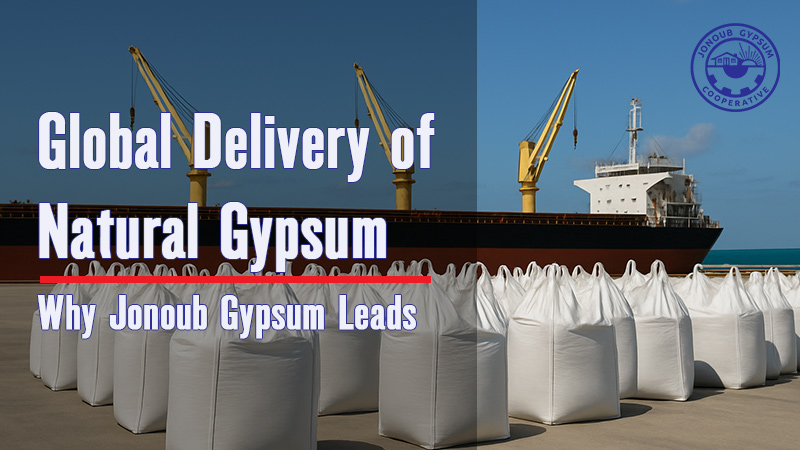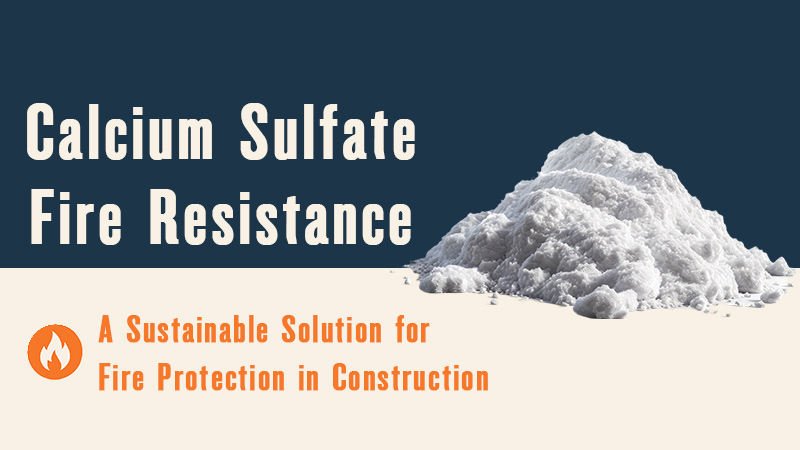
How does gypsum the age-old mineral made?
life of Gypsum the age-old mines were started millions of years ago by the evaporation of saltwater lakes and swamp water.
This has caused the lakes’ water to become very salty over time.
As a result, by combining the deposited salts with chemical compounds, minerals, and decayed plants, different non-metallic minerals such as gypsum are created.
What is gypsum?
Gypsum with the chemical formula CaSO4.2H2O consists of 79.1% calcium sulfate and 20.9% water.
In terms of volume, nearly 50% of its mineral structure is water. This water is completely dry and known as crystallized water.
Similar to lime, gypsum is heated up to about 180 °C in special kilns after extraction for water molecules to lose 3/2 of their crystallization and form the usable plaster in constructions and moldings.
The chemical reaction of forming plaster from gypsum is as followes:
CaSO4.2H2O CaSO4.1/2H2O + 3/2H2O
Advantages of gypsum
Gypsum is a versatile and valuable material in construction, widely appreciated for its numerous benefits. It has become an integral component in modern building practices due to its ease of use, environmental compatibility, and aesthetic appeal. Below, we explore the many advantages of gypsum in detail.
Provides a Smooth Finish
One of the most significant advantages of gypsum is its ability to create a smooth finish on walls. Gypsum plaster is commonly used to coat the interior surfaces of buildings, providing a polished and uniform appearance. This finish not only enhances the visual appeal of the walls but also prepares them for subsequent treatments, such as paint or wallpaper. In many cases, the application of gypsum plaster reduces the need for additional paint, as it delivers a clean and attractive surface on its own.
Additionally, gypsum is a preferred material for repairing and filling gaps around door and window frames. Its malleable nature allows it to be shaped and applied with precision, ensuring a seamless integration with the surrounding surfaces. This ability to render smooth, defect-free finishes makes gypsum a favored choice among builders and architects.
Ease of Application
Gypsum is highly valued for its ease and speed of application. The process of mixing, applying, and smoothing gypsum plaster is straightforward, enabling quicker project completion compared to other materials like cement plaster. The rapid drying time of gypsum also contributes to its efficiency, as subsequent construction activities can resume without significant delays. This time-saving aspect is particularly beneficial in large-scale or time-sensitive construction projects.
Creates a Flat Wall Surface
Using gypsum as a plaster material ensures the creation of a flat and even surface on walls. This flatness is crucial for the proper installation of decorative elements, fixtures, or furniture. Uneven surfaces can lead to complications during installation and may detract from the overall aesthetic of the interior space. Gypsum’s ability to deliver precision and uniformity makes it an indispensable material for modern construction.
Regulates Indoor Humidity and Temperature
Gypsum has a unique ability to balance indoor humidity and temperature levels. It achieves this by naturally absorbing and releasing moisture from the surrounding air, helping to maintain a stable indoor climate. This property is particularly advantageous in regions with fluctuating humidity levels, as it enhances the comfort and livability of indoor spaces.
In addition to humidity regulation, gypsum contributes to temperature control within buildings. Its thermal properties help insulate walls, reducing heat transfer and maintaining a comfortable indoor environment. This can result in lower energy consumption for heating or cooling, making gypsum an eco-friendly and cost-effective option for construction.
Environmentally Compatible
Gypsum is an environmentally compatible material, as it is non-toxic, recyclable, and widely available. Its production involves minimal energy consumption compared to other building materials like cement, reducing its environmental footprint. Additionally, gypsum plaster does not release harmful chemicals into the air, ensuring safer indoor air quality for occupants. Its compatibility with sustainable construction practices further enhances its appeal in the modern building industry.
Fire Retardancy
Gypsum is inherently fire-resistant, which is a critical safety feature in construction. The material contains crystallized water, which is released as steam when exposed to high temperatures. This steam acts as a barrier, slowing down the spread of fire and protecting the underlying structure. Gypsum’s fire retardancy is a key reason it is used in high-occupancy buildings, such as schools, hospitals, and residential complexes, where safety is a top priority.
Superior Thermal and Sound Insulation
Another notable advantage of gypsum is its thermal and sound insulation properties. Gypsum plaster helps reduce heat loss through walls, improving the energy efficiency of buildings. This insulation capability contributes to maintaining a consistent indoor temperature, reducing reliance on artificial heating or cooling systems.
In terms of sound insulation, gypsum is highly effective at dampening noise, creating quieter indoor environments. This makes it an ideal choice for spaces where sound control is essential, such as offices, schools, and residential areas. The enhanced acoustic comfort provided by gypsum is a valuable feature for improving the quality of life in various settings.
Enhances Aesthetic Appeal
Gypsum is widely recognized for its aesthetic versatility. Its smooth and seamless finish allows it to be used creatively in a variety of design applications. From decorative moldings and ceiling designs to intricate wall patterns, gypsum can be shaped and adapted to suit diverse architectural styles. Its ability to achieve complex and detailed designs makes it a popular choice for enhancing the visual appeal of interiors.
Additionally, gypsum’s neutral appearance serves as a perfect backdrop for paints, textures, and other decorative treatments. Whether used in minimalist or elaborate designs, gypsum plays a vital role in elevating the overall aesthetic of a space.
Simple and Functional
Despite its many advanced features, gypsum remains simple to use and highly functional. Its straightforward application process, combined with its wide range of benefits, makes it an indispensable material in construction. Gypsum strikes a balance between practicality and aesthetics, meeting the needs of both builders and occupants.
Disadvantages of gypsum
While gypsum is widely recognized for its versatility and utility in construction, it is not without its limitations. Understanding these disadvantages is crucial for making informed decisions about where and how to use this material effectively.
Unsuitability for Exterior Applications
One of the primary drawbacks of gypsum is its inability to be used on exterior walls. This limitation arises because gypsum is highly susceptible to moisture absorption. When exposed to external weather conditions, such as rain or humidity, gypsum tends to absorb water, leading to degradation over time. The absorbed moisture weakens the structure of the plaster, causing it to lose its strength and durability. This makes gypsum unsuitable for outdoor use, where constant exposure to the elements is inevitable.
Incompatibility with Moisture-Prone Areas
Gypsum’s sensitivity to moisture extends to indoor areas as well. It is not recommended for use in spaces with high levels of humidity or frequent exposure to water, such as bathrooms, toilets, washing areas, and kitchens. In these environments, the plaster is likely to absorb moisture from the air or direct water contact. This can result in swelling, cracking, or flaking of the gypsum surface, compromising the aesthetic and functional aspects of the structure.
In addition to affecting its physical appearance, moisture absorption in gypsum can also lead to secondary problems such as the growth of mold or mildew. These issues not only reduce the lifespan of the material but also pose health risks, particularly in poorly ventilated spaces.
Susceptibility to Damage from Oozing
Another significant disadvantage of gypsum is its vulnerability to damage caused by oozing. When gypsum is exposed to water or moisture, it can undergo rapid degradation. The absorbed water reacts with the material, leading to a breakdown of its internal structure. This quick deterioration can result in a loss of adhesion to the substrate, rendering the plaster ineffective.
Oozing damage is particularly problematic because it often occurs without immediate warning, making it difficult to prevent or mitigate. Once the breakdown begins, the affected area must be repaired or replaced entirely, adding to maintenance costs and effort.
Maintenance Challenges
Due to its sensitivity to water and moisture, gypsum surfaces require careful maintenance to ensure their longevity. This includes regular inspections for signs of water damage, such as discoloration, cracking, or flaking. Protective measures, such as sealing or painting, can be applied to mitigate moisture absorption, but these solutions are not always foolproof. Over time, even well-maintained gypsum surfaces may succumb to the effects of humidity or accidental water exposure, necessitating repairs or replacements.
Limited Load-Bearing Capacity
While not directly related to its moisture sensitivity, another drawback of gypsum is its limited load-bearing capacity. Gypsum is a relatively soft material compared to other construction materials like cement or concrete. This makes it unsuitable for structural applications where strength and load-bearing capabilities are essential. Its primary use is restricted to non-structural purposes, such as wall plastering, decorative moldings, and false ceilings.







